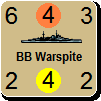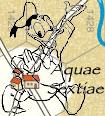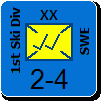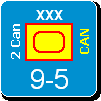warspite1
Posts: 41353
Joined: 2/2/2008
From: England
Status: offline

|
Here is my first draft of the Saratoga-class carrier Lexington. As usual, I would be grateful for the spotting of any spelling, grammar or historical inaccuracies please.
[4037 Lexington - by Robert Jenkins]
.B Engine output: 180,000 hp
.B Top Speed: 33.25 knots
.B Main armament: 48 x 1.1-inch (28mm), 32 x 20mm guns
.B Aircraft: 88
.B Displacement (full load): 47,700 tons
.B Thickest armour: 7-inch (belt)
.P The two ship Saratoga-class were originally battlecruisers that were
designed for the United States Navy (USN) in response to the British Hood and the
Japanese Amagi-class. Under the terms of the Washington Naval Treaty of 1922, the
USN decided to convert the two ships into aircraft carriers.
.P They were the USN`s first "real" carriers, following in the wake of the
experimental Langley, and were both completed at the end of 1927. These were very
large ships, which featured a full-length flight deck; 888 feet in length. Not
until the Midway-class carriers were constructed at the end of the war, would a
flight-deck be built this long on any carrier, in any navy. Despite their size,
they were very fast ships thanks to their enormously powerful machinery which was
capable of producing 180,000 hp.
.P Defensive armament originally boasted eight 8-inch guns in four twin turrets,
but these were removed on both ships in early 1942. They were replaced on
Saratoga with four twin 5-inch dual-purpose guns, but there were none available
for her sister at that time. Lexington received instead, twelve quadruple
1.1-inch anti-aircraft (AA) guns.
.P The ship had just one voluminous hangar which was served by two lifts. Despite
the hangar`s size, these carriers still required the use of a deck park in order
to have sufficient space for all their aircraft. From 1942, two catapults were
fitted, capable of launching 16,000lbs at 74 knots, although Lexington was sunk
before she had the chance to receive hers. Eight arrester wires assisted aircraft
landing.
.P Both ships of the class were named after famous battles from the American War
of Independence.
.P USS Lexington began her war with a lucky escape; as part of Task Force (TF)
12, she had left Pearl Harbor on the 5th December with an escort of cruisers and
destroyers. TF12 sailed for Midway in order to deliver aircraft to the island
and so missed the Japanese attack on Pearl Harbor on the morning of the 7th
December 1941 (see USS Arizona). Having arrived back at Pearl after the raid,
Lexington was ordered to the island of Wake to the south-west of Midway, (see USS
Chicago) although she was able to do nothing to save the heroic defenders of that Pacific
outpost which surrendered to the Japanese on the 23rd December.
.P Lexington`s next operation, a raid on Wake Island, was part of a series of
carrier strikes designed to take the war to the Japanese, however TF11, as her
task force was now designated, had their part of the operation cancelled on the
23rd January (see USS San Francisco). At the end of January, TF11 was tasked with
covering two troop and supply convoys into the South West Pacific (see USS
Trenton).
.P With TF11 now in that region, the US Navy decided to launch a strike against
the port of Rabaul, on the island of New Britain. On the 19th February, like the
Wake Island raid before it, the operation was cancelled, this time because the
task force was spotted by land-based Japanese bombers while some distance from
the target. TF11 then withdrew and joined up with ANZAC Force (See USS Chicago)
for a period of patrol in the Coral Sea and TF11 were then tasked with launching
an air strike, in conjuction with TF17, against Japanese positions in northern
New Guinea. The air strikes were carried out from a position south of the island
and was successful in sinking or destroying a number of Japanese ships, including
the cruiser Yubari which was damaged.
.P At the start of May, Japanese expansion was at last checked by the Allied
forces. Although they were to suffer a tactical defeat at the Battle of the Coral
Sea - losing Lexington in exchange for the converted small carrier Shoho - the
Americans inflicted two important blows against the Japanese; firstly, the
Japanese invasion of Port Moresby in New Guinea was postponed, and secondly, two
fleet carriers were removed from the Japanese order of battle for the forthcoming
Midway operation. The absence of the carriers proved fatal to Japanese hopes.
.P After their stunning early successes, the Japanese were at a loggerheads over
what to do next. The Army were not prepared to commit large ground forces to any
"Navy" operation, given their commitments in China, and this ruled out an
invasion of Australia or Ceylon. What was finally agreed upon was for a series of
operations that would expand the Japanese defensive perimeter and at the same
time, cut off Australia from the US. This latter objective meant in the first
instance, occupying the whole of New Guinea and the Solomon Islands.
.P The Americans became aware of the Japanese intentions through their superior
code-breaking activity and in response to discovering that the 5th Carrier
Division was being sent to assist the Japanese operation, Admital Nimitz ordered
all four fleet carriers and their support units to the Coral Sea to intervene.
Two of the carriers, Hornet and Enterprise, had only recently returned from the
raid on Tokyo (see USS Hornet) and so were not able to make the Coral Sea in time
for the battle. That left TF17 and TF11, that were already nearby, to take on the
Japanese. For the forthcoming battle TF11 became part of an enlarged TF17,
commanded by Admiral Fletcher. TF17 consisted of the carriers Yorktown and
Lexington; the cruisers Minneapolis, New Orleans, Astoria, Chester and Portland
and five destroyers. Under the command of the Australian Rear-Admiral Crace, were
a cruiser force containing two heavy cruisers: HMAS Australia and USS Chicago;
the light cruiser HMAS Hobart, and two destroyers. There was also a Fuelling
Group, consisting of two tankers escorted by two destroyers and finally, around
a dozen US submarines were in the area.
.P The overall command of Operation MO was entrusted to Vice-Admiral Inoue,
commander of the 4th Fleet, who commanded the battle from his flagship, the
cruiser Kashima, based at Rabaul, New Britain. The Japanese order of battle
consisted of the following units: The Tulagi Invasion Group consisted of a mixed
force of transports, minesweepers, destroyers and sub-chasers. They carried the
troops of the 3rd Kure Special Naval Landing Force (SNLF) that were tasked with
securing the island. Covering this convoy were the Support Group and Close Cover
Force. These contained two light cruisers, a seaplane tender and a number of
smaller vessels. The Port Moresby Invasion Group contained eleven transports
carrying a further 5,500 troops. This convoy had the light cruiser Yubari and a
number of destroyers and other smaller vessels for a close escort. The Covering
Group and Main Body Support Force was commanded by Rear-Admiral Goto, aboard the
cruiser Aoba, and also consisted of the light carrier Shoho, the heavy cruisers,
Kako, Kinugasa and Furutaka and a destroyer. Last, but by no means least was Vice
-Admiral Takagi`s Carrier Striking Force which contained the fleet carriers
Shokaku and Zuikaku; the heavy cruisers Myoko and Haguro, and six destroyers.
Supporting these groups were seven submarines and numerous land based aircraft
from Rabaul, Lae and later Tulagi.
.P What ensued was a confused affair; the first naval battle fought between two
fleets that never sighted each other. All the fighting was carried out by the
aircraft of both sides.
.P The Japanese operation, code-named MO, began behind schedule, but as the
various groups entered the Coral Sea, they were unmolested by TF17 as Fletcher
decided to keep a watching brief and attack when he felt the time was right.
After re-fuelling, Fletcher ordered Yorktown and her escorts south of Tulagi from
where a number of air strikes were launched against the Tulagi invasion force on
the 3rd May. These strikes did not stop the taking of the island - which had
already been evacuated - but did cost the Japanese, one destroyer and three
smaller vessels, for the loss of three US aircraft. Yorktown then returned to
join Lexington and her escorts; all three Allied task forces joined up on 6th
May.
.P For the Japanese, this was the first indication that at least one US carrier
was in the area, and Goto`s Covering Group sailed west to cover the Port Moresby
Invasion Force that was due to enter the Coral Sea a couple of days later, having
left Rabaul on the 4th May. Meanwhile, Takagi`s Carrier Strike Force had sailed
from Truk three days earlier. Takagi sailed down the eastern side of the Solomon
Islands and entered the Coral Sea south of Guadalcanal. The plan was that from
there, they would be able to eliminate any enemy forces that entered the Coral
Sea seeking to interupt the New Guinea Operation.
.P Both fleets now made incorrect decisions as to what the other would do. The
Japanese believed the US forces would have attacked Tulagi from east of the
Solomons, while Fletcher thought that Takagi`s carriers would enter the Coral Sea
from the north to protect the invasion shipping. In fact, on the night of the 6th
May, they were sailing north on a parallel course less than 100 miles apart!
.P The following morning, Fletcher detached Crace`s cruisers and destroyers and
sent them to guard Jomard Passage, south-east of New Guinea, to keep watch for
the invasion fleet. It was a risky decision given their lack of air cover, but
one that paid off as although the force was attacked, they were only subjected to
light damage. Because both Fletcher and Takagi were completely wrong about the
other`s whereabouts, the reconnaissance aircraft failed to find what they were
looking for, although both found different targets.
.P The Japanese had found the oiler USS Neosho and her destroyer escort USS Sims.
Thinking that they had located the main US carrier force, a full strike was
launched against the two vessels at 0800hrs and in the face of overwhelming odds,
Sims was quickly sunk. Neosho would later be scuttled (see Transport Counter
4243).
.P Meanwhile, the Americans had a sighting of their own; and this really was a
carrier. The US aircraft had stumbled across the Tulagi Covering Force, and the
carrier Shoho. Fletcher could only assume that this was one of the two fleet
carriers, and he too ordered a full strike to take place immediately. Shoho did
not stand a chance, hit by numerous bombs and torpedoes, she sank within just a
few minutes for the loss of three aircraft. Inoue, fearing further attack,
decided to withdraw the invasion fleet and await further developments. The
sinking of the Shoho produced one of the most famous signals of World War II;
Lt-Commander Dixon, a Dauntless pilot from Lexington famously radioed "Scratch
one flat top!" at the demise of the Japanese vessel.
.P With daylight coming to an end, the Japanese launched twenty-seven aircraft,
as using some of their most experienced pilots, they hoped to find the US
carriers, even though it meant these aircraft would need to find their carrier
and then land in the dark. It was a disaster; no less than twenty-one aircraft
failed to make it back. Eleven had crashed trying to land and ten had been shot
down when they stumbled across the Yorktown and, thinking her their own ship, had
tried to land on her.
.P Both Fletcher and Takagi retired and waited for the morning; and the
inevitable battle that would be fought. At first light, scout planes from both
sides were in the sky and at 0820hrs one of Lexington`s pilots found the Japanese
carriers. Almost at the same time, the Japanese found Fletcher`s force and the
race began to get aircraft in the sky to attack. The two fleets were just over
two hundred miles apart and they began to close on each other.
.P Yorktown`s aircraft were first into the attack, targeting Shokaku as her
sister ship was partially hidden behind cloud. Shokaku took three bombs that
caused huge damage to the ship, but were not to prove terminal. Fortunately for
her, many of the US aircraft failed to find the carriers, and none of the torpedo
-bombers found their target. Just after midday, she withdrew from the battle, her
flight-deck rendered completely out of action.
.P The Japanese in-coming aircraft meanwhile had been picked up on Lexington`s
radar at 1055hrs and twenty minutes later, the Japanese attacked both ships, with
Lexington attracting the most attention. Two torpedoes struck her port side,
damaging her aviation fuel tanks, but Yorktown was missed by her attackers. The
dive-bombers arrived shortly after and again the bulk of the attacking aircraft
were directed toward the larger carrier. Two bombs smashed into Lexington and a
third hit Yorktown, causing major internal damage. Yorktown was also rocked by a
number of near misses that caused hull damage.
.P After they had spent their deadly cargoes, the fighter and bomber aircraft
returned to their carriers during the early afternoon. Incredibly, Lexington and
Yorktown were both able to recover their aircraft while Shokaku`s aircraft had to
put down on Zuikaku. With damage to both carriers and a shortage of fuel
following the loss of Neosho, Fletcher decided to withdraw. Things were equally
as bad for the Japanese as Zuikaku could report less than forty aircraft fit for
operations; Takagi too withdrew. In doing so, the Port Moresby invasion was
postponed, and the ships returned to Rabaul.
.P Unfortunately for Lexington, although the damage done earlier was seemingly
non-fatal, sparks from an electric motor ignited the aviation fuel vapour that
had been leaking since the first torpedo struck. A huge fire was started and this
was followed by two further large explosions in mid-afternoon that caused the
ship to become an inferno. Just after 1700hrs, Lexington was abandoned and two
hours later she was torpedoed and sunk by the destroyer Phelps. 216 officers and
men were lost.
.P The Lady Lex was gone, but the next major encounter would see her avenged and
more. For the Japanese, checked in the Coral Sea, the initiative they had held
since December 1941 was to end for good almost exactly one month later, at a
point a few hundred miles north-west of an island in the Central Pacific.....an
island named Midway (see USS Yorktown).
_____________________________
England expects that every man will do his duty. Horatio Nelson October 1805  |
 Printable Version
Printable Version






















 New Messages
New Messages No New Messages
No New Messages Hot Topic w/ New Messages
Hot Topic w/ New Messages Hot Topic w/o New Messages
Hot Topic w/o New Messages Locked w/ New Messages
Locked w/ New Messages Locked w/o New Messages
Locked w/o New Messages Post New Thread
Post New Thread